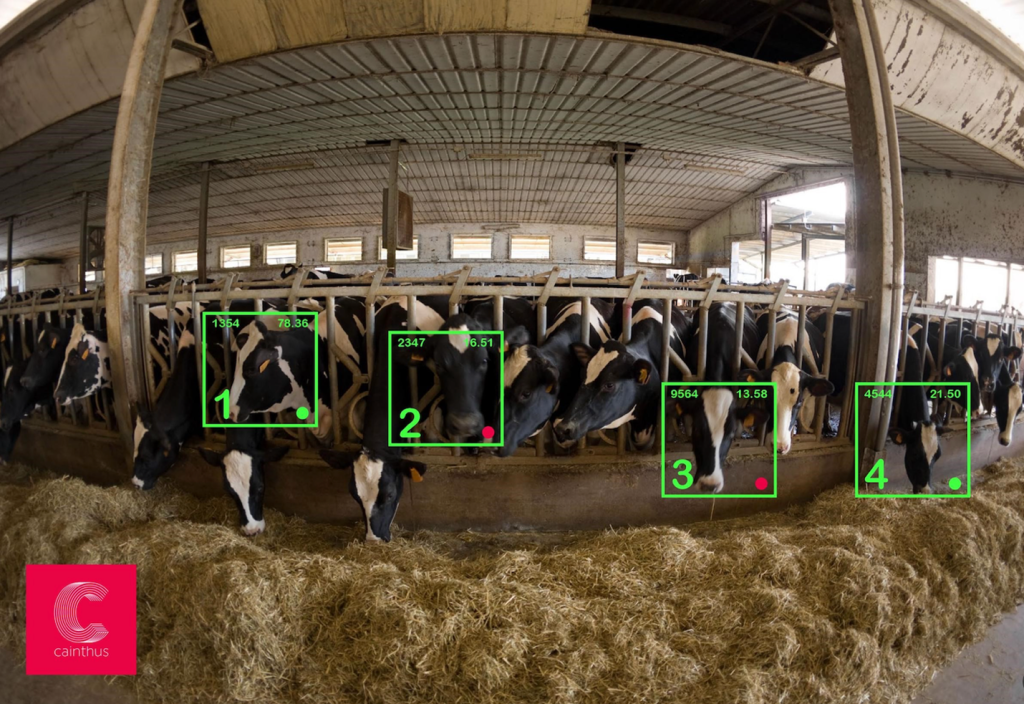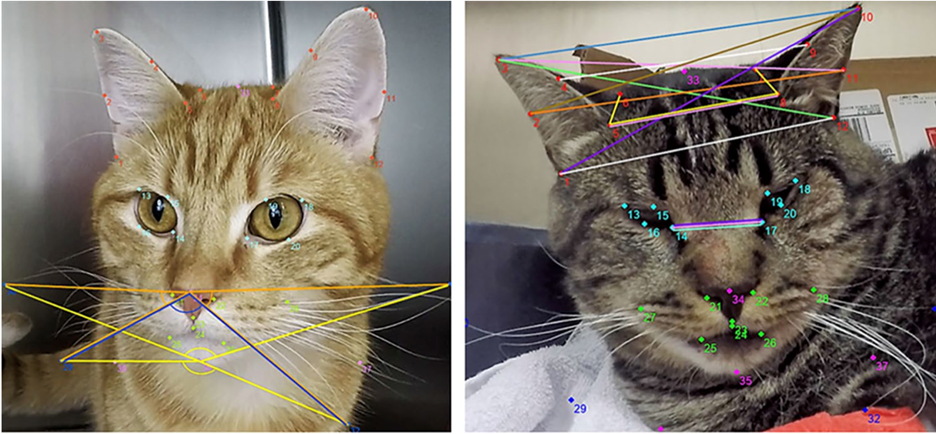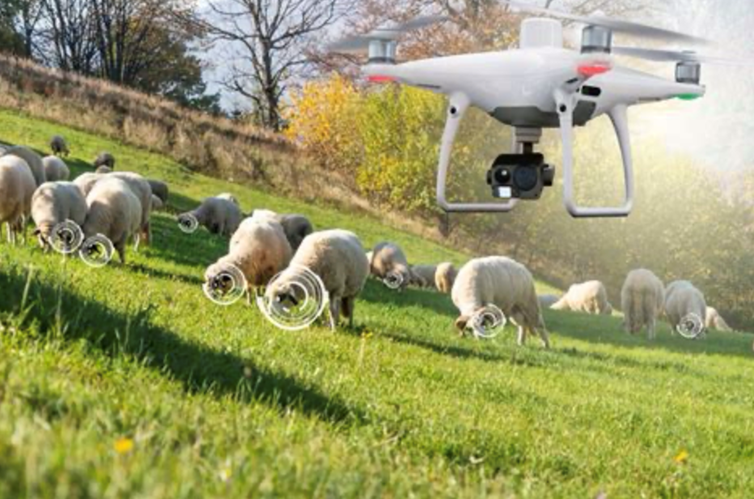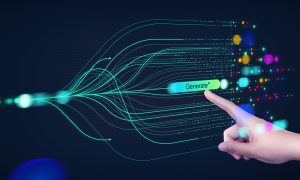In September 2021, Welsh dairy farmer Ceredig Evans glanced at his phone just as the morning milking finished. An overhead AI (artificial intelligence) camera from the start-up, CattleEye had quietly flagged the faintest hitch in a Holstein’s stride, marking her “at risk of lameness”. Evans trimmed the hoof that same afternoon, preventing a painful lesion and an expensive drop in milk yield days before a human eye would have noticed.
Stories like this are appearing from barns and clinics around the world, showing how artificial intelligence is reshaping animal care, from livestock welfare to pet diagnostics. AI is quickly becoming a powerful ally in animal healthcare. From farms to clinics, AI technologies are helping veterinarians and farmers make faster, more accurate decisions to protect the health and well-being of animals.
But what exactly does AI do?
Imagine a tool that can scan thousands of X-rays, CTs, and ultrasound frames in seconds; spotting what the human eye might miss. That’s already happening. AI-powered imaging systems, trained on extensive libraries of veterinary images, are now detecting, with striking accuracy, early-stage tumours, hairline fractures, and even injuries like a torn cruciate ligament in a Labrador.
Faster, data-driven diagnoses mean pets get surgery sooner, and cows or horses receive treatment before health issues lead to production losses. Beyond imaging, AI is also transforming real-time health monitoring. Sensors and smart devices like wearable collars or barn cameras collect continuous data on movement, temperature, and behavior. Machine learning then analyses these patterns to detect subtle changes that may signal illness, such as lameness or respiratory issues. The result? Early disease detection allows for timely treatment, reducing suffering, and lowering overall costs.

Computer-vision overlay tags each cow and colour-codes welfare status inside an Irish dairy barn.
Source: Alltech Blog — “Bridging the data gap in dairy farming: The promise of digital technologies.”
By cross-referencing an animal’s genetics, past medical records, diet, and even barn micro-climate, machine-learning models suggest the most effective therapy with fewer side-effects. One emerging field, pharmacogenomics, uses DNA markers to tailor drug doses or flag risks such as when a Collie carries the MDR1 mutation that makes common antiparasitics toxic. In short, the algorithm helps veterinarians move from “one-size-fits-all” to “this dose, for this dog, today”. All of this is made possible thanks to huge amounts of data and the ability of AI to recognise patterns within it.
While the technology is not perfect, and still requires expert oversight, it’s already transforming how we care for animals. Whether it’s a cow on a dairy farm or a dog in a clinic, AI is quietly making animal healthcare smarter, faster, and more compassionate.
AI is helping us understand animals in a way that was once unimaginable. From large cattle farms to remote wildlife habitats, AI enables continuous, real-time monitoring, offering a powerful new lens into the health and behavior of animals.
Using sensors, cameras, and computer vision, AI can track animal movements, detect signs of discomfort, or even assess emotional states. For instance, gait analysis powered by AI can recognize lameness in cows by analysing subtle changes in how they walk. In poultry farming, smart systems monitor crowd density and behaviour to detect early signs of disease or aggression, improving welfare and reducing losses.
Animal emotion recognition is also advancing rapidly. Machine learning models have been used to analyse facial expressions in cats and horses to detect pain, using tools like the Horse Grimace Scale and facial landmark detection.
One study used deep learning to accurately identify pain levels in cats based on facial features, achieving over 72% accuracy, a step forward in ensuring silent suffering doesn’t go unnoticed.

Colored landmarks depict geometric features a deep-learning model uses to score five Feline Grimace actions. Image source:
Steagall P V, Monteiro B P, Marangoni S, Moussa M & Sautié M.
Fully automated deep-learning models with smartphone applicability for prediction of pain using the Feline Grimace Scale.
Scientific Reports 13, 21584 (2023), Figure 5. CC BY 4.0.
AI also assists in livestock management through smart farming platforms. In dairy herds, behaviour data collected over years have been used to predict daily milk yield and optimise feeding routines, reducing stress and improving productivity. Drones and robots now work alongside AI to monitor large herds, spot sick animals, and ensure proper environmental conditions, like temperature and air quality.

A quad-copter tags each sheep with real-time health markers during a hillside pasture survey. ©Ambiq. How AI Is Reinventing Animal Husbandry.
Beyond agriculture, AI-powered identification systems based on facial recognition have been tested on wildlife such as giant pandas, with over 90% accuracy, offering a boon for conservation efforts. By offering a 24/7 watchful eye, AI doesn’t replace the human-animal bond, it strengthens it, helping us detect issues earlier, respond faster, and ultimately create safer, more humane environments for animals.
AI offers tremendous promise for animal health, but “with great power comes great responsibility, for the veterinarian, the farmer and the coder alike.”
As technology advances, so do the ethical questions it raises: How do we ensure transparency? Who owns the data? And how do we balance automation with human touch? One of the biggest challenges is data quality. AI depends on large, clean datasets to learn and make accurate predictions. Yet in veterinary medicine, data are often inconsistent, fragmented, and species-specific, which can limit model accuracy and fairness. This becomes especially critical when AI systems are used for decisions that directly affect animal welfare, such as pain detection or treatment recommendations.
Another concern is the “black box” nature of some AI systems. Deep learning models can make impressively accurate predictions, but often without explaining how they got there. This lack of interpretability makes it difficult for veterinarians to trust AI-assisted diagnoses or treatments, especially in complex or high-stakes cases.
Privacy and security also matter, particularly as more farms and clinics adopt wearable tech, sensors, and video systems. The storage and use of animal health data must be protected, especially when tied to proprietary systems or linked to broader food supply chains.
Equally important, AI should augment, not sideline, veterinary expertise, freeing clinicians to focus on nuanced judgment and the human–animal bond. Still, with careful design, AI can become an ethical tool. Tools like Explainable AI (XAI) are being developed to help practitioners understand model decisions. AI is also helping reduce animal suffering, enabling early intervention, improving welfare, and even guiding breeding to avoid inherited disorders.
Going forward, interdisciplinary collaboration will be key. Veterinarians, data scientists, ethicists, and policymakers must work together to ensure AI serves not just efficiency, but compassion. With the right guardrails, AI can help us not only do more but do better for animals.
Your Turn in the AI Journey
AI is already shaving hours off diagnoses and surfacing welfare issues we once missed. Yet, its greatest contribution may be the data-driven empathy it unlocks, helping us notice pain, stress, or disease before an animal ever shows it.
Have you tried an AI tool in your clinic, shelter, or farm? Share your experience and tag World Organisation for Animal Health on social media. Your insights will keep this conversation, and the innovation, moving forward.
The Animal Echo aims to promote individual and collective understanding of animal health and welfare. We bring you insights and opinions from experts across the world. The opinions expressed in The Animal Echo are those of the author (s) and may not necessarily reflect WOAH’s official position.







